Intussusception or other worms in humans is an infestation that affects the entire body. This disease is caused by infection with the eggs and larvae of worms and is characterized by a number of specific symptoms.
Diagnosis is made by several tests, both stool and blood. Worms of the abdomen and other organs occur in adults and children, and may appear in the anus, in the stool, or not externally.
Reason
Intestinal worms are transmitted mainly by the fecal-oral route, ie, if you want to infect, you must swallow the eggs of the parasites or larvae of the worms. An unpleasant feature of this infestation is that some helminths in children and adults persist for a long time outside the host body (eg, in water, in soil).
The eggs of the parasite that the adults lay there remain infectious for several months. This feature makes certain types of worms very common in children and adults.
The main routes of infection are as follows:
- Contamination is caused by the use of untreated water, which can be in wells, natural reservoirs, and even tap water. Almost all human intestinal parasites survive and multiply in water for a long time, so it is better to drink bottled water. In areas where sanitary conditions are unfavorable, the water in the well is used only after a long boil;
- Worms may appear in the child's buttocks due to eating poorly washed vegetables. If manure is used to fertilize soil infested with worms, their larvae, eggs and adults will appear and survive for a long time in the soil. Along with the soil particles, the eggs fall on the vegetables. If such a vegetable is not washed, then they enter the host's body, causing the penetration of helminths in the person;
- Bloating and other symptoms characteristic of an infection can occur after eating contaminated meat, fish, or poultry. If an animal, bird or fish is infected with roundworm during its lifetime, its flesh is most likely to become infected as well, while the parasite (for example, fish) easily takes root in the human body. people. You can only get rid of them through careful and prolonged meat handling (boiling or frying at maximum heat). You can also defeat the invasion by freezing. But since most modern home freezers are capable of a maximum temperature of about 8 degrees, it is necessary to keep meat, fish or poultry there for at least a week;
- Signs of worm infection in humans can appear after contact with pets. Dogs and cats on the street almost always have worms in their stomachs (domestic cats are not usually infected). When performing hygienic procedures, the animal spreads worm eggs from the anus throughout the coat. If you kiss such an animal or do not wash your hands after contacting it, you can get worms into the human body, since the entry of the animal takes root and reproduces in the human body;
- A person may notice bloating and other signs of the presence of helminths even after swimming in an infected pond. This is a fairly rare method, but infection can occur;
- Transmission of human helminthiasis from one individual to another occurs through surfaces, towels, and linen. Eggs and larvae move to surfaces or tissues from the skin of an infected person, and from there to the skin of a healthy person when touched. Then there is a possibility that they enter the oral cavity of a healthy person and develop an infection.
It should be remembered that many types of intestinal parasites are common among children. This is because many children are not too concerned about hygiene and many surfaces in kindergartens are covered with helminth eggs, the photo of which is shown below, even if only one child is initially sick. .
For this reason, it is the primary duty of parents to explain to their children that all human worms are dangerous and can live on the skin of the hands and from there enter the mouth. For this reason, good hygiene is very important. A video about the spread of worms in women, men and children and their developmental characteristics is posted at the end of the document.
Level
Some patients are interested in the color of the worms and how to visually determine they are present in the stool? Usually these are white or bright worms, although sometimes transparent worms are also found in humans. They are flat or round, sometimes with two dark food grooves on the sides.
- The largest human worms are called tapeworms. The largest of this group is the beef tapeworm. According to scientific research, they can live in the intestine for up to 40 years and reach a length of several meters.
- Roundworms are the most common pests, belonging to the nematode family. Can such individuals be very large? Females reach a length of about 25 cm, males - 12 cm;
- Pinworms are more common in children than in adults. These are small individuals, similar in description to roundworms, but smaller. The largest pinworms reach only 10-12 cm;
- Giardia is the smallest parasite. It is quite common. If it is found in the faeces, you need to think about what to do with the worms and begin treatment options;
- Trichinosis invasion is characterized by the most severe course, fever and facial edema. Such invasions are called Trichinella nematode invasions.
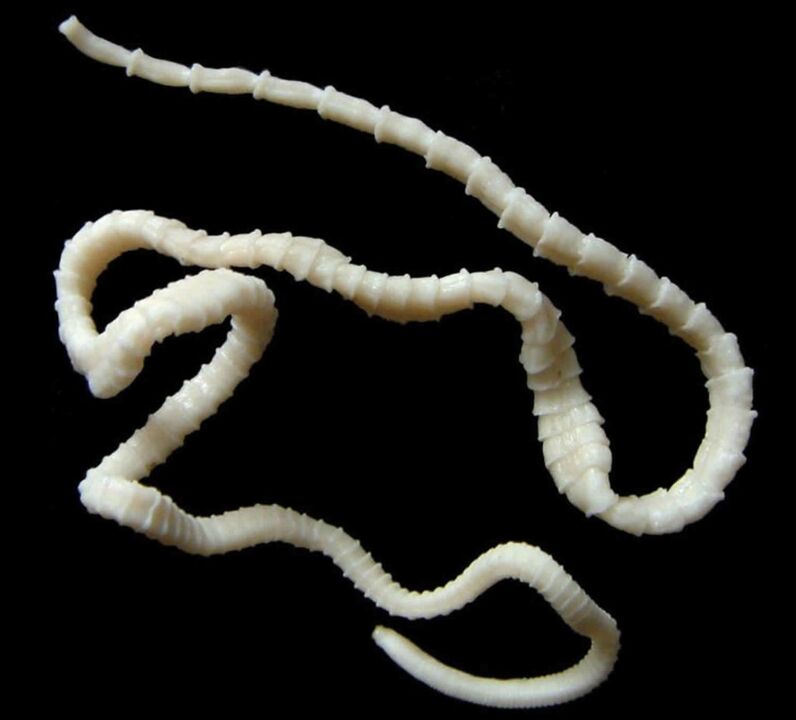
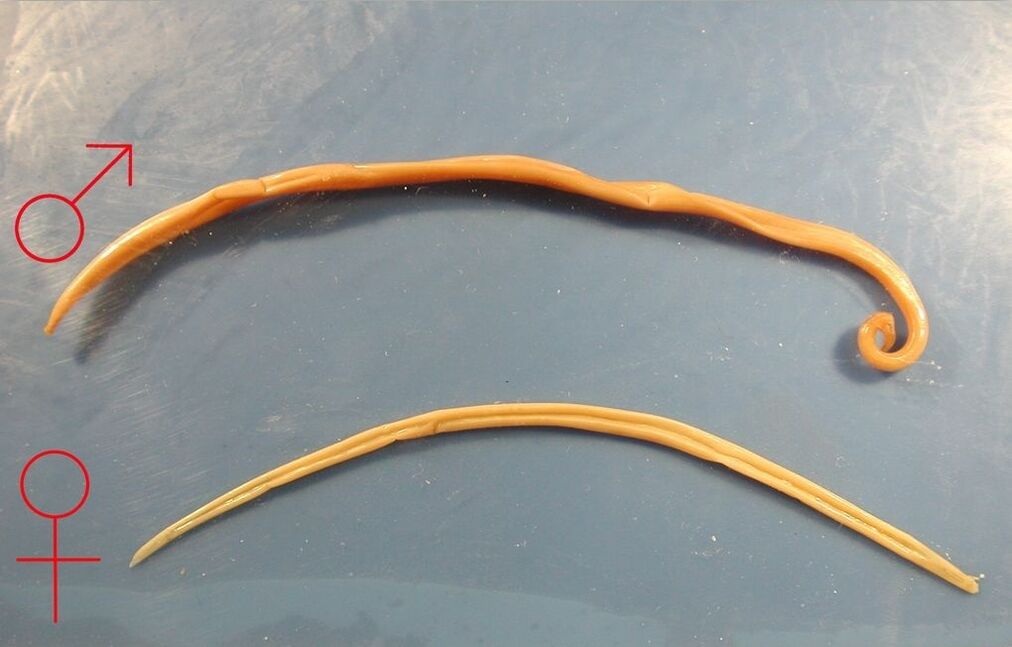
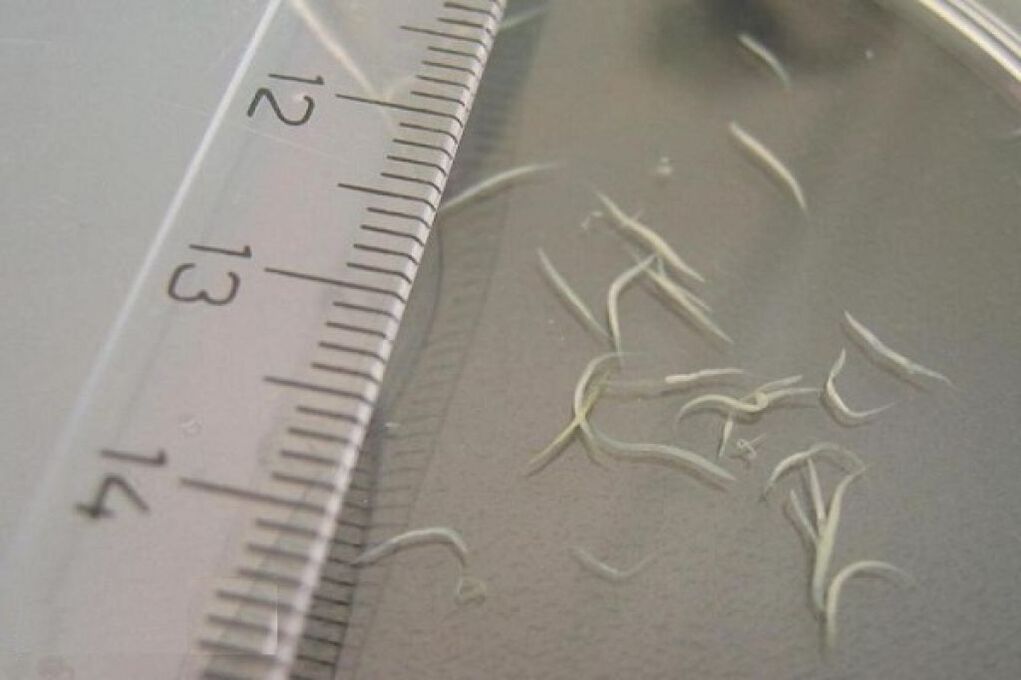
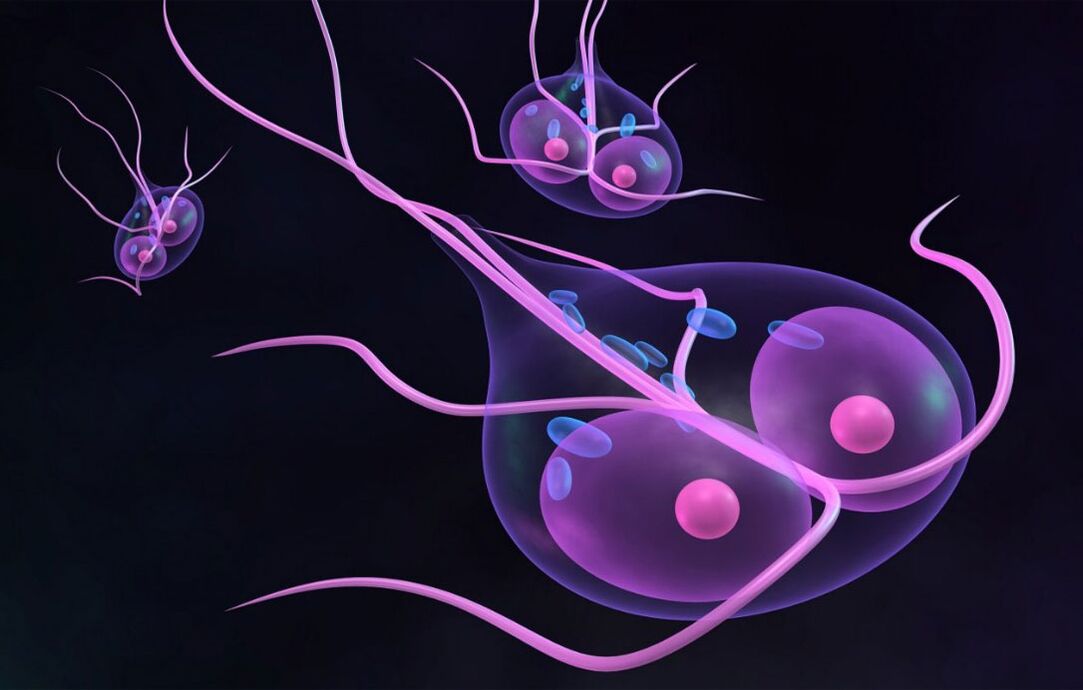
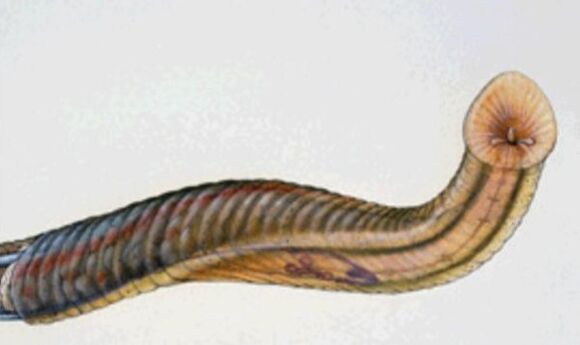
The most common types of individuals have common features and are visible in the feces. Thus, the feces of a person infected with worms can be distinguished from the feces of an uninfected person.
Localization
Some people who suspect they have an infestation are interested in where the worms will reside in the human body? Although it is traditionally believed that worms appear in the human body in the intestinal tract, this is not entirely true.
Almost all human helminths can develop in many organs and systems, which is related to the peculiarities of their migration, when larvae hatching from eggs in the intestine enter the intestine. blood and spread throughout the body.
They enter the human body through the mouth, but their manifestation can occur in the following locations:
- Subcutaneous parasites are not a very common tropical parasite carried by insects (tsetse flies, specific tropical ticks, etc. ). Subcutaneous parasites are almost never found in the mid lane, but there is a risk of infecting them while sightseeing. Such parasites reside under the skin only at the beginning of the life cycle, after which they can migrate to the muscles;
- The most common locations in women are the vagina and uterus. They can crawl there from the anus or infect the reproductive system at the migratory stage;
- Worms in the ears of children or adults are also found because these larvae often infect the ENT organs (including the pharynx);
- Many species of worms choose the digestive system and intestines as their habitat. There they have enough nutrients (blood and serum) and oxygen to maintain a normal life. Treating intestinal parasites is often easier than other types. But even if they are initially in a person's stomach, then over time they can infect other organs;
- Signs of worms in the lungs can be confused with the characteristic symptoms of pleurisy or pneumonia. However, this is a common habitat for worms, so it is important to diagnose their presence promptly;
- If parasites accumulate in the brain, the nervous system is damaged. It can manifest itself as seizures, irritability, unreasonable anxiety, etc. v . . . ;
- If worms in humans manifest themselves in the heart, then possible tachycardia, arrhythmia and much more. In particularly severe cases, heart failure develops;
- In the liver, helminths are also common, because there they pass mainly from the intestine via the portal vein.
As can be seen, patients who are wondering where worms live in humans should consider not only the type of entry, but also the stage of infection.
Complications
It's important to know what worms lead to, and what happens if you don't treat them? Worms cause general toxicity to the body, which can be very pronounced.
Allergic symptoms also appear, as the immune system produces histamine to protect against foreign invaders. In this case, you need to remember what an allergic rash looks like with helminths - these are pink spots of medium size, sometimes a rash, itching, often without.
As well as localizing in the liver, and when located in other organs, human tapeworms or other parasites cause damage to the mucous membranes and local inflammatory processes in a small area.
As a result, abscesses can occur (in the case of the liver, with the breakthrough of pus into the abdominal cavity and blood poisoning if left untreated).
As with damage to the bronchi and lungs, coughing is often present. Then bronchitis, pleurisy or pneumonia develops, which must be treated with antibiotics, despite the fact that this is a reaction to an infestation.
With the localization of the parasite in the vagina, exacerbations of chronic diseases and disorders of the microflora may appear. It is believed that such a phenomenon can lead to infertility.
Symptom
The symptoms of worms in humans are varied, but they are characteristic of most parasites. However, chronic and acute infections can have different symptoms in adults. In acute infection, the following symptoms of the disease are characteristic:
- High temperature under normal general conditions (up to 38 degrees);
- Chills and skin symptoms (rash) similar to fever;
- When the larvae are localized in the lungs or bronchi, systemic symptoms are manifested by coughing;
- Inflammatory processes are a sign of the presence of worms in the human body, as a result, an increase in lymph nodes occurs;
- Worms and allergies in a person are related, therefore, signs of the appearance of worms in a person in the form of rashes and allergic reactions are possible.
But most symptoms of the presence of worms in humans are intestinal, where the parasites are most often localized. These are the symptoms of a worm infection in a person, such as:
- Stool disturbances - constipation or diarrhea, sometimes bloody;
- The first symptoms of worms are loss of appetite, nausea, aversion to certain foods, which eventually leads to weight loss;
- The first signs of worm disease in adults can also be gas and bloating;
- Over time, pain in the abdomen and stomach develops, independent of food intake, intermittently or continuously;
- With worms, a person develops symptoms of general intoxication - paleness, drowsiness, chronic fatigue, etc. v.
Skin parasites cause specific symptoms in adults and children. Recognizing signs of worms are numbness of the extremities, tingling in the skin, headache, dizziness, less often - fever. In all cases, the incubation period of worms in humans is quite long and can take anywhere from a few weeks to several months.
For this reason, the first signs of worm disease in a person may not appear soon. And since virtually all symptoms in a person in the presence of worms can indicate other diseases, often if a person is infected with worms, this only becomes apparent when they pass in the stool.
Diagnose
Even if you know how worms appear, you may not notice their appearance. Some types of worms do not appear for a long time, and the diagnosis of worms in humans cannot be done at home. In laboratories, the following methods are used to help determine if worms are present, their symptoms and treatment are discussed in this article:
- General blood analysis. Worms can be in the case where there is a deviation in it. Looks like severe anemia - iron and hemoglobin levels drop significantly. It occurs because human worms cause local bleeding, constantly damaging the mucosa, and they are also parasites that feed directly into the blood;
- If the worms are in the intestines, their waste will be in the stool. What signs of worms in an individual can be seen in the feces? These are eggs, larvae, or even adults of the parasite. Although, if you know what worms look like in humans, the adults in the feces can be identified independently;
- No matter where the worms come from in humans and what kind of worms in humans (protozoa, roundworms, tapeworms) there are antibodies to them in the blood. This is due to the fact that as soon as a person contracts the worms, the immune system treats them as a foreign invasion and tries to defend against it by producing antibodies. This method helps determine what types of worms are present and what symptoms should be expected, since different antibodies are produced for each infection.
The second diagnostic method is especially good because it allows you to learn about worms at an early stage, identify the types of worms and figure out how to treat worms in humans.
Treatment
Some patients interested in what human worms look like and how they enter the body also want to know an individual cure. The official drug treatment for worms in adults consists of a single dose of a dewormer that acts on the whole body when a person is infected with worms.
It is also recommended to repeat the course of treatment in adults 2 - 3 weeks after the first use of the drug. It is necessary to disinfect the small and large infected foci twice to completely remove the larvae.
Other treatment is suggested if worms are in children. Because the drug is toxic, treatment in adults has adverse effects on the liver. For children, prescribed drugs can be taken in a short course (several times), which helps to reduce the load on the liver.
Some people who wonder about how to treat worms for individuals have chosen folk methods of fighting, when worms in adults or children are eliminated by natural means.
It is believed that a mixture of ground pumpkin seeds with honey in a 1: 1 ratio is effective against worms, if consumed daily in a tablespoon.
Effective treatment is carried out using enemas from a garlic milk solution. You can also be treated for intestinal worms by drinking a similar solution. When there are worms in the person, the symptoms will begin to show weaker after a week.
Preventive
Knowing where the worms come from, where the pinworms come from, you can determine a list of rules to follow in order to protect yourself from worms in people. In order not to have to ask the question "do I have worms", you should do the following:
- Wash vegetables and fruits thoroughly;
- Thoroughly boil or fry meat, you can also freeze it for a long time;
- Use only bottled or purified water for drinking;
- Limit contact with pets and practice helminthic infection prevention regularly;
- Wash your hands often, especially after being in public.
If infection is suspected, stool should be checked regularly for helminths.





























